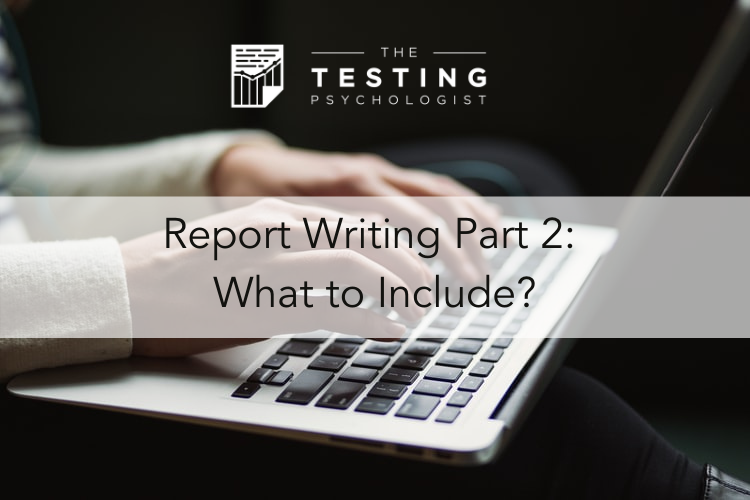Podcast: Play in new window | Download | Embed
Would you rather read the transcript? Click here.
After the episode last week on making our reports more readable, I’m talking this week about what kind of content to actually include in your reports. “But that’s easy,” you might say. We just include the background, results, interpretation, summary, and recommendations, right? Wellll…research would suggest that our audiences read and value some parts of the report much more than others. Listen on to learn which parts are most important and how to arrange them in your reports.
Cool Things Mentioned
- Postal et al’s Stakeholders article
- Neuropsychological Report Writing by Jacobus Donders (affiliate link)
- The Peer Consult
Featured Resource
I am honored to partner with PAR for the next few months to bring you featured items from their catalog! Listen to each episode for specific product recommendations and links. Learn more at www.parinc.com.
The Testing Psychologist podcast is approved for CEU’s!
I’ve partnered with At Health to offer CE credits for podcast episodes! Visit this link to access current and past episodes available for CE credit. You can use code “TTP10” for a discount on ALL the course credits you purchase from At Health!
About Dr. Jeremy Sharp

I’m a licensed psychologist and Clinical Director at the Colorado Center for Assessment & Counseling, a private practice that I founded in 2009 and grew to include nine licensed clinicians, three clinicians in training, and a full administrative staff. I earned my undergraduate degree in Experimental Psychology from the University of South Carolina before getting my Master’s and PhD in Counseling Psychology from Colorado State University. These days, I specialize in psychological and neuropsychological evaluation with kids and adolescents.
As the host of the Testing Psychologist Podcast, I provide private practice consulting for psychologists and other mental health professionals who want to start or grow psychological testing services in their practices. I live in Fort Collins, Colorado with my wife (also a therapist) and two young kids.
Ready to grow your testing services? Click below to schedule a complimentary 30-minute pre-consulting call!


Comments 6
Do you have an example of what a report that follows the inverted pyramid style would look like?
Author
You can find some great examples at http://www.thepeerconsult.com and a few others at https://iopc.online/!
This conversation is so essential right now. Particularly for testing psychologists who don’t work in private practices (e.g., schools, community mental health, hospitals, etc.). We fall back on having to “defend our position” and describe tests/subtests but often FAIL to integrate the results, which is the reason for the assessment. I appreciate your good honest look at what we are doing and how to look upon report writing as a skill that you need to update. It is sometimes very difficult for our profession to look inwards. Thanks for part one and part two of this podcast! I hope to have a robust discussion with my team around it.
Author
Thanks for the kind words! I’m honestly just reflecting what I’ve learned from others and applied in our practice 🙂 I’m glad that it was helpful for you!
Thank you for this topic. I found it really validating since I have had these same thoughts and concerns about the formatting of reports we have been using forever. First, let me preface that I am not a neuropsychologist but a clinical psychologist so I think my referral questions and test batteries may be different. I like the idea of including scores at the end as a table, rather than paragraphs of interpretation. But I wondered how you would do that for projective tests or even questionnaires like the MACI or MMPI-A? I never include actual scores for these in my report (never putting the structural summary from the Rorschach in a report) but just include a paragraph of the interpretation. What do you all do when you have these sort of emotional tests in your battery?
Author
I’d love to hear from others who might use the Rorschach, but I can draw similarities here with the ADOS, which we use a lot. We used to write a long summary of the ADOS results but now just incorporate the important components, briefly, in the interpretation/summary section. Same with other social/emotional/personality measures like the BASC, MACI, etc. For me the challenge has been shifting from the mindset of “I need to write all of this out to justify my conclusions” to doing the justification process internally and then writing a nice, clear synthesis that ties together all of the data without just rehashing results.